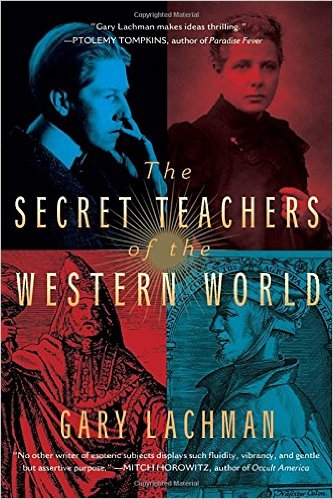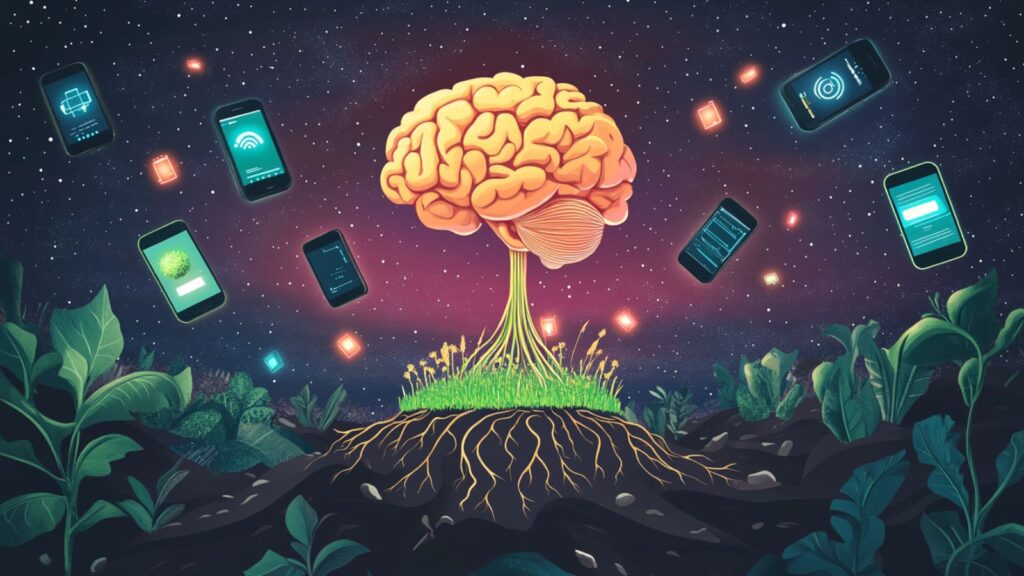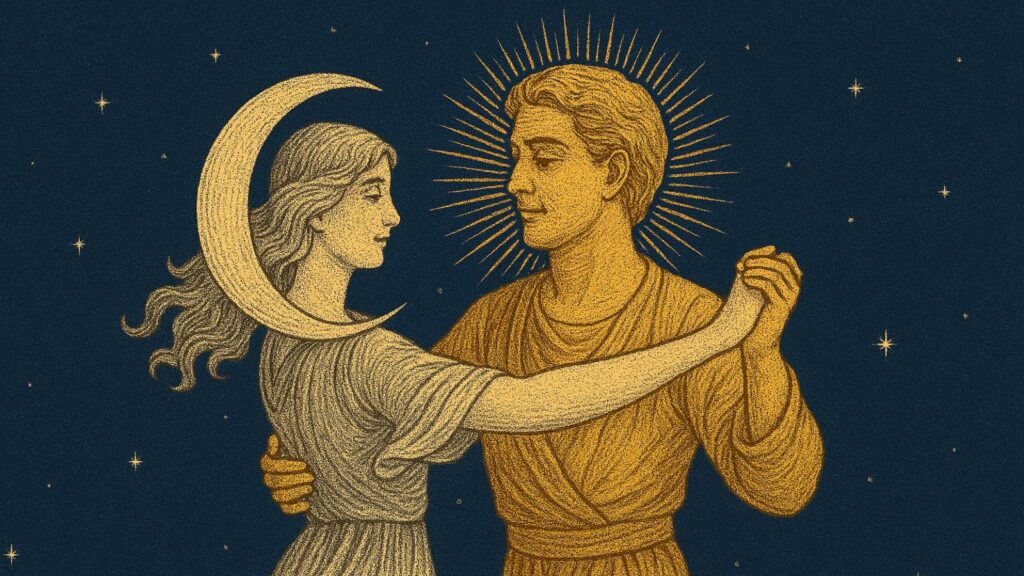I had the pleasure of reading through Gary Lachman’s astonishing new book this spring, The Secret Teachers of the Western World. Gary was kind enough to answer some of my questions, which went like this.
Jeffrey Kripal: Gary, you treat SO much material. You are also reminding your readers that we do not need to accept everything a particular speculative writer wrote to appreciate the basic ideas of the author. Fair enough. But how do we do this? I mean, how do we develop this kind of connoisseurship without decades of reading? As you write with respect to the esoteric and the internet, “discrimination is key.” So how do we acquire this kind of discrimination? How do we separate the wheat from the chaff?
Gary Lachman: Well, the art of discrimination does take some time to acquire, but then anything worthwhile does. I have been reading about the sorts of things I write about for forty years now, and so I have had the time to make some headway with this. There really isn’t an easy way to do it, although if, like myself, one is a voracious reader, it is actually a pleasant task. You simply need to read a great deal and to apply the same kind of critical sense you would apply to anything else to the literature.
A. R. Orage, the brilliant editor of the New Age journal of the early 20th century and one of Gurdjieff’s main disciples said somewhere that the most important requirement for esoteric study is common sense. Unfortunately this often gets left behind when anything mystical, magical, or esoteric begins to be mentioned. To some extent this is understandable. Interest in the esoteric is often accompanied by a frustration with ‘mainstream’ intellectual approaches, and so the idea that we need to “turn off our mind” and rely on intuition takes precedence. This has its advantages, but it also has significant disadvantages, and I spell some of these out in the book. My own trajectory began with naive enthusiasm which gradually became a more serious interest. By serious I don’t mean academic, simply that I began to think about these matters, not merely accept the word from this or that master. This led on occasion to some friction. I have also always been deeply committed to the western intellectual tradition, so my esoteric reading took place alongside a parallel study of western philosophy, literature, science and so on. In fact one of the key areas that excites me today is the similarity between some esoteric thought and some concerns of more ‘acceptable’ western thinkers. In my more recent books, for example, I examine what I think are clear resonances between some ideas about consciousness of mainstream philosophers like Bergson and Whitehead and those of more radical figures, like the maverick Egyptologist R. A. Schwaller de Lubicz. Long ago St. Paul said “Prove all things. Hold fast to that which is true.” That’s discrimination in a nutshell. Separate the coarse from the fine.
It also helps to have a specific question in mind, rather than a vague general wish for ‘enlightenment’. After my initial introduction to the occult and esoteric, my interest more and more focused on consciousness. That enabled me to cut a path through the thick undergrowth of occult and esoteric literature.
I always suspect some kind of background gnosis in writers like yourself, some guiding beacon that “just knows” what to keep and what to let go. I know you discuss your encounter with Colin Wilson’s The Occult, your work in the Bodhi Tree (an important New Age bookstore in L.A.) and your travels to various significant sites and personalities, but is there more here, some personal revelation or gnosis? Can you say something about that possibility? I mean, are you one of our secret teachers, too? Should we be reading this book on many levels?
I can’t say I’ve had one, specific experience that has informed my work. I didn’t have a conversion experience nor have I been bowled over by a mystical event. In my case it has been a less dramatic but perhaps more stable gradual insight into these matters. I have thought my way to them, which means that I can understand them intellectually. Arguments for them have convinced me, and my experience corroborated the arguments.
I can say that what excited me about The Occult was that in it, Wilson described experiences that I had had myself. But I didn’t have a language with which to speak about them until then. Wilson writes of what he calls “Faculty X,” which he describes as a sense of ‘the reality of other times and places.’ Essentially this is an awareness that ‘reality’ extends beyond the present moment. Our problem is that we are trapped in the present, just as if we were stuck in a locked room. I had had moments when I felt somehow above the moment. I was a reader of Nietzsche since my teens and he speaks of feeling ‘six thousand feet above man and time’ when the inspiration for Thus Spake Zarathustra came to him. I knew how Nietzsche felt. These weren’t drug experiences. In fact, although many people find taking entheogens and such useful, I can’t say my experiences with them have been that important to me. Pleasant enough, but not particularly significant. But these other experiences were, and when I began to read Wilson, I began to see that there was a way to understand them. In some of my books I describe some other similar enlightening moments.
In my book on Ouspensky I write about my experiences with ‘self-remembering’ and with the Gurdjieff ‘movements.’ In my book on Jung I write about particularly striking synchronicities that left me in no doubt about their reality and importance. In my book on Steiner I write of my experiences with some of his mental exercises and how this led to a powerful sense of ‘participation’ with the external world; I speak of looking at a rose and feeling that my consciousness somehow ‘cradled’ it. I have always had a strong sense of the ‘is-ness’ of things, what Meister Eckhart calls Istigkeit and when I became to study this literature I began to have an idea of exactly what was happening in these moments.
In the late 70s to mid 80s, I experimented with different ‘teachings’ and was for a time involved with an Aleister Crowley group and then the Gurdjieff ‘work’. So I have tried to combine an intellectual approach to understanding these things with a hands-on practical approach as well. But this is really the “existential way,” to speak of it like that. For existentialism thought and life are not opposed. The meaning and purpose of our life, here and now, is its central concern, and it is that sensibility that I have tried to maintain. I do intend at some point to write about the different “mystical” or “paranormal” or, as you have it in your new book, “super natural” experiences I have had and how they have gradually helped me form my present sense of things.
As I read your book, there appear to be two central organizing themes: (1) the developmental or evolutionary model of Jean Gebser on the formation of different forms of consciousness and consequent ways of knowing over the centuries of Western civilization; and (2) the recent work of Ian McGilchrist around the two hemispheres of the brain and how the left-brain functions have more or less taken over Western culture. You associate the suppressed right-brain ways of knowing with the “secret teachers” of Western esotericism. You begin and end the book reflecting on these same two thinkers. You also end your book with a careful and nuanced hope for a more “integral brain.” Can you tell our readers more about these two central writers and how they helped you write a very ambitious history of Western esotericism?
I came across Gebser’s work in the late 80s through Georg Feuerstein’s book on him, Structures of Consciousness. A copy of The Ever Present Origin came into the bookshop and I grabbed it and was bowled over by it. Gebser’s central idea is that consciousness has mutated – he doesn’t say evolved – through different “structures” from our primitive beginnings in a kind of group mind to our present, highly differentiated discrete separate selves. He calls these the archaic, the magical, the mythic, and the mental rational structures of consciousness. These have emerged from a source he calls “origin,” which exists in some pre-temporal, pre-spatial manner that is difficult to understand. Each structure is progressively further “away” from origin, from its source. We are currently experiencing the “breakdown” of the mental-rational consciousness structure, which began around 1250 BC. This with luck will clear a space for the emergence of what Gebser sees as an “integral” structure, integrating the previous four and somehow achieving a direct awareness again of origin.
I draw on Gebser because the ferocious attack on the hermetic, animistic worldview launched by Merin Mersenne in the early seventeenth century seems to me to be an example of what Gebser means by a structure of consciousness becoming “deficient,” when its benefits are exhausted and they become liabilities; this is when it breaks down and hypertrophies. The hyper-rationality and determination to eliminate the hermetic view – aimed especially at the Rosicrucian Robert Fludd – is an expression of this. And I link Gebser’s ideas to McGilchrist’s notion that our two cerebral hemispheres are engaged in a kind of rivalry, a competition. This has been the case throughout western history, but in recent times – say the past few centuries – our left brain has been gaining the upper hand until now, as McGilchrist argues, it has become dominant and is crowding out the input from the right.
Our two brains see the world in very different ways. McGilchrist points out that it is not so much that the two brains do different things – as was first thought – but that they do the same things very differently. To put it simply, the right brain sees the world as an immediate, living, whole, a tangible presence that it participates with. It sees and feels the connections among all things; because of this its experience is vague, broad, general, implicit. The left brain’s job is to process and analyze the world that the right brain “presences,” so that we can know it and understand it and move around in it. It breaks the whole down into bits and pieces and creates a very efficient map of the world made of abstract symbols rather than living presences. If the right brain sees the forest, the left sees the tree. The right absorbs meaning; the left seeks clarity. Both of course are necessary, but what seems to have happened is that the left brain approach, because it is geared to practical success, has managed a kind of coup and is gradually reproducing the world in its likeness, and marginalizing any opposition. I refer to Leonard Shlain’s book The Alphabet Versus the Goddess as another example of the idea that there is an antagonism between the two brains. Shalin sees it in terms of the rise of the alphabet and writing, which is a left brain, linear process, as opposed to what he sees as an earlier, right brain, image-based culture, which he identifies with a matriarchal society.
I wondered: if the left brain is engaged in a campaign against the right, would it open up other fronts? I mean, would it attack a right brain view of the world in other contexts? Marin Mersenne’s vicious attack on the hermetic, esoteric, inner world view in 1623, in support of the rising Cartesian mechanical view, seemed to me to be a clear example of a left brain attack on a right brain body of knowledge, because that is what the western esoteric tradition seems to be, a knowledge system based on imagination, rather than analysis. It was eliminating the competition. It was a complete smear campaign, and the downfall of Hermes Trismegistus a few years earlier at the hand of humanist scholarship – another left brain discipline – again suggested something like a case of character assassination.
Now the esoteric, inner tradition itself is well aware of the tension between the two ways of being, the two modes of knowing. And like Gebser and McGilchrist, it is interested in the creative polarity between the two. Gebser speaks of integrating the structures, and McGilchrist points out that the times when the warring hemispheres reach an accord are times of great creativity; he points to the Renaissance and the Romantic Movement as examples. We know alchemy is about bringing opposites together; we know about yin and yang, and the harmony of the two opposing pillars in the kabbalah’s tree of life through the middle pillar. Blake tells us that “Opposition is true friendship” and “Without contraries there is no progression.” Goethe and Coleridge and many others saw this polarity as the essential foundation of consciousness and being. So it seemed to me that one could see the history of the western esoteric tradition, and that of the western mind itself, in terms of this idea of a struggle between two different ways of knowing the world.
Personally speaking now, I was particularly intrigued by Stan Gooch, whose work I have come across but never really engaged. Can you say more about him, and perhaps why he is not better known and read?
Stan Gooch is a very important and exciting thinker and it is a shame that his work is not better known. I first became aware of it in the late 70s and went on to read everything he wrote. He was a Jungian who linked his studies of human psychology to the paranormal and his ideas about Neanderthal man.
Gooch had many insights into Neanderthal that were laughed at when he first presented them but that have since been corroborated. For example, he argued that we are the product of Neanderthal and Cro-Magnon mating. When he first mentioned this in the 70s, he became an intellectual pariah. Now it is accepted. He believed that Neanderthal was psychic and that he had a religion, culture and so on much more sophisticated than what had been thought. This too has been vindicated.
In books like Total Man and The Neanderthal Question Gooch looked at what he saw was our inheritance from Neanderthal, and he argued that in each of us is a kind of “double,” an “other self” that was more psychic, intuitive, lunar, and so on, and that this was in a kind of constant tussle with our more solar, rational, logical everyday selves. He wrote brilliant books about the paranormal, The Paranormal and The Double Helix of the Mind, where he writes about the importance of the cerebellum, the ‘litte brain’ around which our cerebral cortex has grown. Gooch was a brilliant and very readable writer, but sadly, none of his books was a big success, and by the early 90s he had more or less given up, frustrated with knowing he was right, but having the status quo dead against him. As far as I can tell, he had financial troubles – as anyone who tries to write for a living does – and in the end he became something of a hermit. I wrote about his ideas in A Secret History of Consciousness and sent him a copy. We corresponded for a time and I was saddened to see that he seemed to have become sunk in depression and a kind of apathy. He died in 2010. Like all creative thinkers, he wanted his ideas to be known, and when it seemed that he was being ignored, he more or less shut down. A tragedy. I think a revival of his work is due and if I can get a publisher interested, I would be happy to help that along.
I was also struck by your distinction between the “superhumanism” of some of the key Renaissance figures (Marsilio Ficino and the early Pico della Mirandola) and the “only humanism” of some of the later critics of the esoteric and the occult. Can you expand on this a bit for our readers?
There seems to have been a split in Humanism in its early years. The first wave of Renaissance humanists, people like the Platonist and hermeticist Marsilio Ficino and the Christian kabbalist Pico della Mirandola, were enthusiastic students of the occult sciences. They saw man as a potential god and rejected completely the Medieval image of man as a lowly, sinful creature, wretched and in need of salvation. (Both were nevertheless good Christians.) The re-discovery of the Platonic and hermetic texts that informed the Renaissance gave man a new self-image as a co-creator with the divine. These early humanists were excited by the re-awakening of the imagination and their vision had a cosmic scope, as Giordano Bruno’s universe of infinite worlds suggests.
The humanists who followed were somewhat more circumspect. Where the early crew looked to Greece and Plato for inspiration, they favored Rome. Eloquence and style were more important to them then flights of cosmic vision, which they found too florid and overdone. Good style, urbanity, mature restraint, and critical discrimination were highly valued. We can see here a distinction informed by the characteristics of our opposing brains, with the right tending toward what I call a “superhumanism,” examples of which include William Blake, and the left tending toward an “only humanism,” a determined deflation of any superhuman pretentions, the kind of down-to-earth attitude exhibited by Isaac Causabon, the scholar who undermined the authenticity of the Corpus Hermeticum.
When you discuss the American countercultural scene and the human potential movement, you cite the psychologist Abe Maslow’s concerns that aspects of these communities and cultures, which he witnessed up close at Esalen, were much too anti-intellectual, that they did not take the life of the mind and critical reason seriously enough. You have also expressed real concern about some of the dangers here in your first book, Turn Off Your Mind. As we try to appreciate more right-brained ways of knowing and being, how can we keep critical reason and the left brain on board? Why can’t we ever seem to get the balance just right, like Goldilocks, as you playfully put it? Not too hot, and not too cold. Not too hard, and not too soft.
Well that I guess is what used to be called the $64,000 question. We can see pendulum swings between the extremes in our history, and certainly since the rise of the scientific approach as our one sure path to truth and knowledge, we’ve experienced repeated outbursts of what we can call right brain consciousness in reaction to this. A recent example of this is the 1960s, which, as you say, I write about in Turn Off Your Mind. Clearly the idea is bring about a creative relationship between the two. I think what is needed first is to understand what the problem is, and that is left brain work. We need to see exactly what is the trouble here, to understand it conceptually, so that it becomes something more than a vague dissatisfaction with our state of consciousness. Plunging into right brain consciousness can be very pleasant and it is a undeniable relief from the desiccated consciousness of the left, but we need more than a right brain holiday. And if Gebser and McGilchrist are right, we outgrew a more right brain dominant consciousness purposefully, in order to develop our more precise, more effective left brain mind. So returning to a pre-left state is not the answer. We need to understand how our consciousness got to be how it is and why it had to develop in this way. We can then recognize its limitations and see how it needs to evolve.
This is why I am less interested in “higher” or “altered” states of consciousness these days than in our consciousness as it is most of the time. This is phenomenology. As I discuss in my book on Colin Wilson, Beyond the Robot, which will be coming out later this year, it seems that we have purposefully limited our consciousness, as an evolutionary necessity – much as our left brain consciousness developed because we needed it to. We have of course done this unconsciously but the idea is to study our consciousness in order to uncover the unconscious acts of “editing” that result in the world that we see. Drugs can remove the unconscious filters that at present edit out 99% of reality, allowing it all to rush into consciousness. But such “cosmic consciousness” is unwieldy. What we need is to be able to open the doors of perception just a bit, to allow in more of the living immediacy of how the right brain sees reality, not knock the doors off their hinges. We can learn how to do this through certain mental acts, which in many ways parallel similar ideas and techniques in the western esoteric tradition. There are certain phenomenological ways of understanding how we perceive the world that are not far removed from some visionary practices in western esotericism. Henry Corbin, who introduced many western minds to the idea of the Imaginal World, the intermediary realm between the world of pure intellect and the physical world, started his career as a phenomenologist and follower of Heidegger.
Again, this is something that runs throughout the western esoteric tradition. We can see it as a right brain based body of knowledge geared toward the integration of both ways of knowing.
Finally, a bit of humor. What is it with British rockers and the occult? I mean, there’s you, and now there’s Nick Redfern. Both of you are astonishingly prolific. Is there something in the water over there? Or in the music?
Well, I’m a yank who found a second – or third – life here, deposited by the waves of a mid-life crisis in 1996. But I’ve always been an Anglophile, even as a kid. I grew up in the 60s, with the Beatles, James Bond, The Prisoner and The Avengers and of course loved Sherlock Holmes, so a lot of my childhood had a kind of British backdrop. Then I became a great reader of Colin Wilson and developed a romantic appreciation of 1950s London, the “duffle coated” days of the Angry Young Men and The Outsider. Then later there was Yeats, Crowley and the Golden Dawn. So I’ve always inhabited a London of the Mind, we might say, before moving here. And what success I’ve had in music came from the UK; my song “(I’m Always Touched by Your) Presence, Dear,” about telepathy, was a UK Top Ten hit. So I can say that England has been very good to me. There’s also a very lively audience here for this sort of thing, with many groups holding talks and book launches and lectures and conferences. And the English do like their ghosts and haunted houses and there is a long connection to esoteric history here – Madame Blavatsky lived not far from my flat. So I’ve found a good second home.
Thank you, Gary!
***














